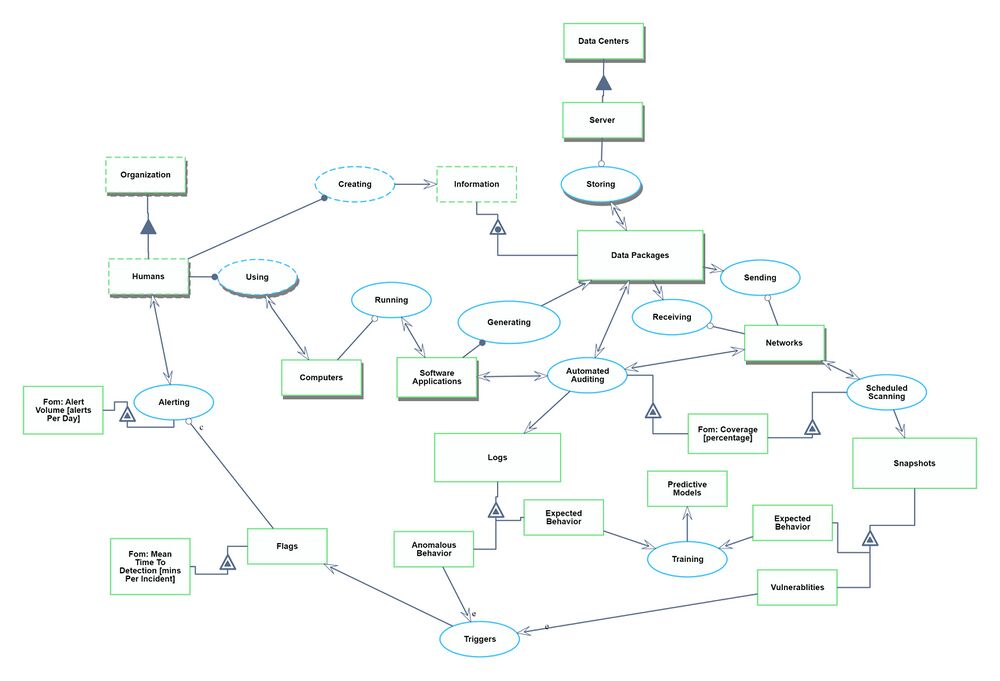Continuous Security Monitoring
Continuous Security Monitoring
Roadmap Overview
A Continuous Security Monitoring (CSM) tool is critical to provide near-real-time surveillance and analysis of an environment to flag potential security threats. A CSM tool is an integral part of any modern cybersecurity framework. The technology affords automation as central to its operation, ensuring that the tool offers ongoing insights in the security posture of an environment and improves an organization's ability to manage potential risks.
The technology functions with behavior analytics to monitor environmental activities in order to pinpoint potentially malicious or anomalous actions. The future of the technology includes advanced predicted analysis using Machine Learning (ML) and Artificial Intelligence (AI) tools where the tool can shift from reactive to proactive intelligence. In the long-term, quantum computing preparedness will be key to ensuring the tool can manage threats in a post-quantum computing world. The tool may also possess the ability to automatically repair itself, thought it currently operates in tandem with human intervention for optimal performance.
Further, the increasing regulation of cyber space and introduction of cybersecurity policy suggest the CSM tool may also be a requirement for regulatory compliance and would allow environments to stay updated with evolving cybersecurity laws and regulations.
The visual below offers insight on where the CSM tool exists in the 5x5 matrix:
DSM Allocation
The most inter-dependencies are with the Healthcare Data Security (2HDS) roadmap. The Healthcare Data Security roadmap is narrowed in to a specific industry whereas we are focused on the more generalized industrial application but a deeper technical level of data security, Continuous Security Monitoring. The higher levels are essentially the same across roadmaps, but industry specific vs generalized. As such, we’ve marked the Healthcare specific roadmap items as subcategories underneath the non-industry specific version. We decided to omit the industry specific items, such as Medical Device Protection, from our DSM.
A more detailed view of the levels for the roadmap interactions is provided in hierarchy form.
Roadmap Model using OPM (ISO 19450)
We defined a Continuous Security Monitoring (CSM) tool to sit within the environment of an organization's Information Technology (IT) infrastructure. The system contains the IT landscape at a high level, such as software applications, data infrastructure, and network routing. We narrowed to just the monitoring and alerting functionality of a CSM tool. There could be additional functionalities within data security such as root cause analysis, remediation, and pro-active repairs, but we have excluded those from our system.
Note: Automated Auditing refers to the automatic generation of logs and monitoring of networks and applications to ensure compliance with security policies and standards.
The Object-Process Model above can be written in natural language as follows:
Figures of Merit (FOM): Definition (name, unit, trends dFOM/dt)
The table below delineates three critical Figures of Merit (FOM) for a CSM tool, in order of priority:
The FOM for Mean Time to Detect (MTTD) is plotted below as the evolution of the technology has afforded a decreased value for MTTD, approaching the theoretical limit of zero, or instantaneous detection. However, reaching an absolute zero MTTD may not be possible due to constraints such as processing time, network latency, and inherent limitation in detection algorithms. The sensitive nature of cybersecurity makes publicly available data a challenge, as well as data sharing. The novelty of the technology in the cybersecurity domain also contributes to the dearth of data and lack of historical data for the technology. Therefore, the resources listed in References informed the construction of the graph below.
References
[1] Cybersecurity Ventures. 2020. History of hacking and defenses. Retrieved from https://cybersecurityventures.com/the-history-of-cybercrime-and-cybersecurity-1940-2020/
[2] Statista. 2023. Median time from compromise to discovery in days of larger organizations worldwide from 2014 to 2019. Retrieved from https://www.statista.com/statistics/221406/time-between-initial-compromise-and-discovery-of-larger-organizations/
[3] Gartner. 2023. List of Critical Capabilities for Cloud Access Security Brokers. Retrieved from https://www.gartner.com/document/4366499?ref=solrAll&refval=381285986&qid=
[4] Oberheide, J., & Cooke, E. 2008. CloudAV: N-Version Antivirus in the Network Cloud. Retrieved from https://www.semanticscholar.org/paper/CloudAV%3A-N-Version-Antivirus-in-the-Network-Cloud-Oberheide-Cooke/1ca0b25bd4fe4994f7f5e334987588776a1a123c
[5] Secureworks. 2017. The Evolution of Intrusion Detection & Prevention. Retrieved from https://www.secureworks.com/blog/the-evolution-of-intrusion-detection-prevention
[6] ISACA. 2021. The Evolution of Security Operations and Strategies for Building an Effective SOC. ISACA Journal, 5. Retrieved from https://www.isaca.org/resources/isaca-journal/issues/2021/volume-5/the-evolution-of-security-operations-and-strategies-for-building-an-effective-soc
[7] Pure Storage. 2023. What is SOAR? Retrieved from https://www.purestorage.com/knowledge/what-is-soar.html
[8] Brand Essence Research. 2023. Security Orchestration, Automation and Response Market. Retrieved from https://brandessenceresearch.com/security/security-orchestration-automation-and-response-market
[9] CrowdStrike. 2023. Falcon Insight XDR. Retrieved from https://www.crowdstrike.com/products/endpoint-security/falcon-insight-xdr/
[10] CrowdStrike. 2023. CrowdStrike Announces General Availability of Falcon XDR. Retrieved from https://www.crowdstrike.com/press-releases/crowdstrike-announces-general-availability-of-falcon-xdr/






